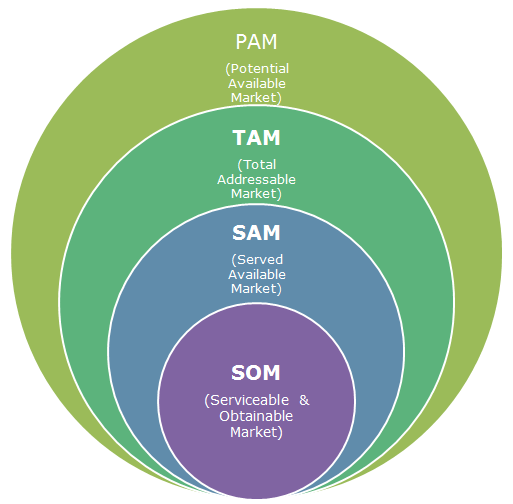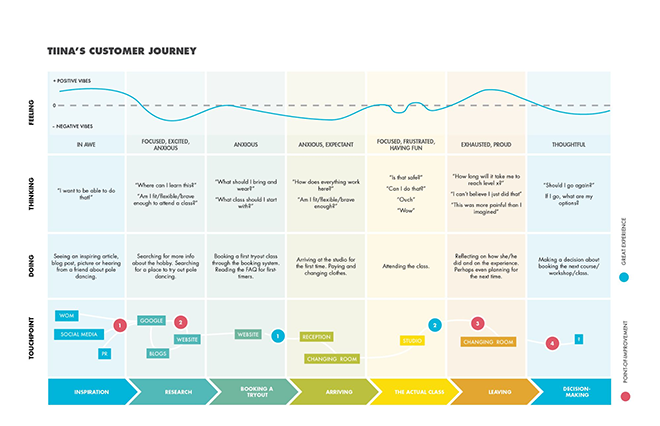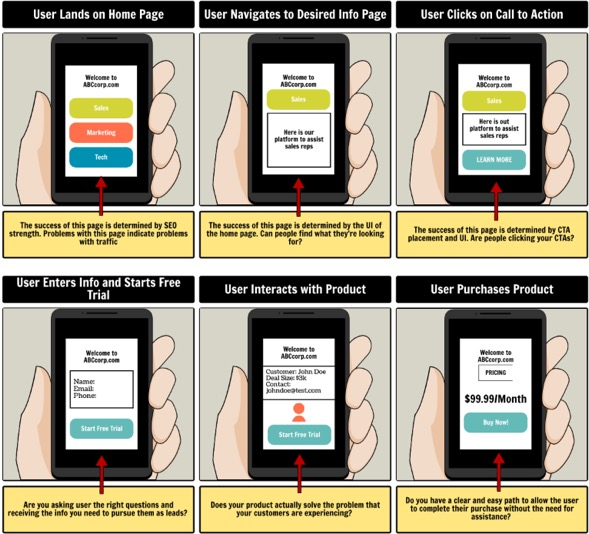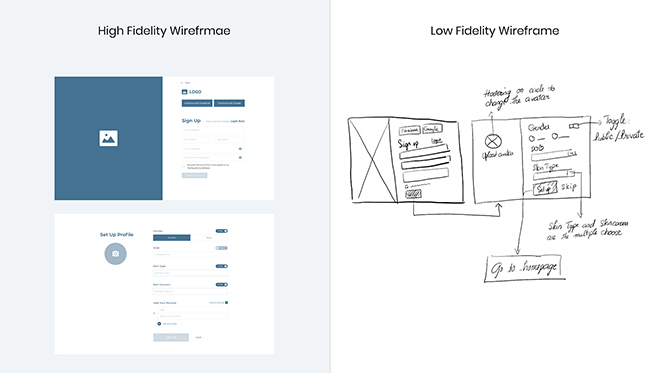![How to Design a Product: 6 Steps[+ Cost Guide]](https://www.devteam.space/content/uploads/2021/03/Design-a-Product-scaled.avif)
How to Design a Product: 6 Steps[+ Cost Guide]
Looking for some expert guidance on how to design a product and estimate costs? In this blog post, I will outline the fundamentals of product design, provide a step-by-step guide for designing a product and highlight the key risks to be aware of when designing a product.
In this article
- The Fundamentals of Design Thinking for Product Design
- How To Design A Product Step-By-Step?
- How To Design A Product Cost Guide?
- Mitigating the Key Risks When Designing a Product
- FAQs on How to Design a Product
As the world continues to favor the fusion of digital experiences in day-to-day interactions, product design continues to play a significant role in setting businesses apart from their competitors.
In a world where AI has penetrated into so many spheres of human life, product design can benefit from this emerging technology, too. According to this report, consumers in the United States show significant support to brands using AI to design products and services.
Design single-handedly constitutes the most important feature that a product will ever have. However, striking the balance between aesthetic appeal and real-time functionality makes the design process a ticklish project to undertake.
With product design playing such a pivotal role in a business's success in the digital sphere, the actual steps taken that lead up to the completed design become integral to its success.
These steps center around pinpointing a possible market opportunity, identifying the problem to be solved for a given market, and ultimately creating a solution for that problem.
Consequently, product design costs vary based on the complexity and number of moving parts of your project, among other things.
The Fundamentals of Design Thinking for Product Design
By its very nature, digital product design is progressive. It consists of several incremental actions which, when carried either in succession or in iteration (depending on the type of action), lead to a finished concept: the product design.
It is upon this gradual cumulative set of activities that the core of correct product design sits: design thinking.

Get a complimentary discovery call and a free ballpark estimate for your project
Trusted by 100x of startups and companies like
Design thinking is a school of thought that serves to provide a concise and practical solution to a specific problem that has been identified. In short, it levies a human-centered approach that emphasizes the need to value the demand of a user, pushing the boundaries of technology to maximize a business’s margin for success.
As a rule of thumb, the design process should be rooted in the product design process as it enables one to streamline activities to ensure cohesion between what is produced in the design process and what the business’s overarching goals are.
In short, design thinking allows you to define unknown or poorly conceptualized problems that a user experiences in order to propose a solution.
Phases of Design Thinking
According to design thinking, the customer-centered approach to problem-solving in product design comprises five phases:
- Empathize: Empathy is a central aspect to design thinking as it permits you to step into your users’ shoes and gain insight into how the problems they experience and how they experience or view a given subject matter. This is usually done through some form of user research.
- Define: This phase consists of gathering the insight gained through empathizing with your product users and analyzing them to determine the core problems that your user faces. Usually, this comes in the form of a problem statement that corresponds to one or more segments of your market.
- Ideate: Ideation involves scrutinizing the problem statement to come up with innovative solutions for it. This may take the shape of identifying a way to improve an existing solution or creating a completely new one altogether.
- Prototype: Prototyping consists of finding the most suitable solution for the problems that were defined. Integral to this phase is experimental development where scaled-down versions of the product (or features) are built.
- Testing: Considered the final stage, this is where the prototypes built previously are ‘fire-tested' to gauge how aptly the solution satisfies the problem at hand.
How To Design A Product Step-By-Step?
With the fundamentals of product design as a backdrop, the design process then turns into the series of steps that a product design team takes to formulate a product. These steps guide the team throughout the necessary stages of product design creation, ensuring that they remain focused on the tasks at hand and thus maximize productivity.
Before proceeding, it is important to state that these steps do not constitute a definitive guide for the creation of designs for all products in the digital sphere. After all, product design is not a one-size-fits-all process.
However, they do orient the general flow that one should adhere to in an effort to nail uniformity between a product’s design and its real users’ expectations.
With that in mind, here are the 6 steps involved in product design:
- Determining product vision & strategy
- Product research
- User analysis
- Product Ideation
- Product Design
- Testing & validation
1. Determining Product Vision & Strategy
From an early stage, product design needs to be rooted in context, logic, and purpose even before the entire design process commences.
A product design team expects a product vision that serves to provide guidance and direction on what is required of them in the subsequent exploratory phases. The failure to do so sets the premise for a project that lacks an overarching goal and focus, thus laying the foundation for poor productivity and, ultimately, a serious hindrance to a team’s ability to create a great product design.

Product vision helps to explain what is being built and the reason for its creation. Product strategy, on the other hand, describes the desired outcome for the new product idea in terms of its creation and overall impact on the stakeholder’s or business owner’s goals.
With that in mind, product vision and strategy depend on two major elements:
- Understand your value proposition: A value proposition is a statement that captures the clearest and most obvious benefit that a user is to receive from using your product. In order to determine this, product teams often use the technique of ‘working backward’. Here, the product team first identifies the product users and then tailors the product vision and strategy to suit them. That way, by centralizing the user in the process, one is better able to deliver a product that meets the people to whom it is destined.
- Identify the criteria for your success: This involves determining what factors will help to measure whether you will be creating a successful product or not. In this sub-step, one must have a list of metrics or key performance indicators (KPIs), such as the number of product sales and registrations, among others, which serve to evaluate progress.
2. Product Research
With the product vision and strategy clearly marked out, product research forms another important pillar upon which any key decision in product design must be founded. To be more concrete, this phase involves both market research (market size, dimensions, competition, etc) and user research respectively. (surveys, questionnaires, interviews, contextual inquiries).
Market research is key to creating a design that guarantees a competitive advantage over your existing competition. For that reason, careful attention must be paid to analyzing competitors, evaluating the strengths and weaknesses of their products, and refining your own strategy to help you stake a solid claim in your respective niche.
It is also important to size the scope of your market, be it based on its Potential Available Market (PAM), Total Available Market (TAM), Serviceable Available Market (SAM), or Serviceable Obtainable Market (SOM), whose correlation can be seen below.

Credits: Pinterest
Similarly, user research serves to understand the specific expectations, needs, pain points, and possible gains of the product’s users.
The method used to obtain this information will vary based on the type of product being created.
This may take the form of interviews, surveys, questionnaires, interviews, or even contextual inquiries which allow one to observe users in a given environment to form conclusions that will impact product design.
In any case, solid research helps you save time and money in the long run by reducing the number of adjustments, corrections, or pivots required in your product design since you will have adopted a customer-first approach to design.
3. User Analysis
Once relevant data from product research has been compiled, and user analysis serves to ground that information into usable insights through which inferences and conclusions can be drawn with regard to user experience, UX/UI design, and user expectations.
Consequential to the market research phase, the product design team can begin to find ways to empathize with users to tailor their products to suit their needs.
One way to do so is by building user personas based on market segmentation. These personas summarize key details about a user segment, oftentimes highlighting their challenges, pains, and ultimate end goals as seen in the example below:

Credits: Justinmind
Conversely, the product team may also utilize an empathy map such as the one below to gauge the needs of various key user groups.

Credits: xPlane.com
These conclusions will be important in the ideation and prototyping phase of product design.
1,200 top developers
us since 2016
You can use key user flows and user journey maps to better understand your users' expectations of your product.
4. Ideation
Product ideation is where the creative juices get flowing.
This phase is marked by activities that serve to meet the project’s goals. As can be expected, product ideation is conditioned by the research and analysis conducted in previous stages.
Therefore, with that as its basis, this phase is critical in the actual product design stage as it acts as a way to validate (or invalidate) key facets that determine what is included in the final product.
Apart from brainstorming, a product design team can choose from several ideation techniques when designing products. A popular one is user journey mapping, a tool whose purpose is to create a visual that lays out how a user will use the product.

Credits: Pinterest
This is usually bolstered by the involvement of information architecture in the user journey mapping process. Here, interactive models are created through a technique such as card sorting and presented to market segments as part of a user test.
Another fairly standard practice is creating storyboards that describe typical scenarios in which a user will use the product being designed.

Credits: UX Booth
In such cases, emphasis should be placed on how the product’s arrival in that person’s life brings about some benefit or satisfies their pain.
Ideas for product design are then compared and contrasted before determining the elements that will be taken moving forward into the next phases.
5. Product Design
This signals the true beginning of product development.
With the mass of insight calibrated and analyzed previously, product teams usually kick things off by doing some sort of product sketch that presents a vision of how the product will look.
This can be done via physical drawings or, most commonly, wireframes.
Low-fidelity wireframes are common since they provide the product design team (and consequently stakeholders and executives) with a basic representation of how the product will look. That way, any important changes can be made before moving on to the complete product.
Once the low-fidelity wireframe mockups have been approved (inclusive or not inclusive of modifications), the product design team can then move on to create high-fidelity wireframes.

Credits: Medium
Following this, the team can then use these wireframes to create interactive prototypes (such as digital prototypes) which allow for rapid experimentation in user testing.
6. Testing & Validation
The product testing phase is where product teams verify whether design concepts defined in previous phases are effective in meeting the goals established by the company or not.
If you are operating on a low budget, you can conduct limited product testing through a technique such as dogfooding, where you use in-house team members as testing participants.
If not, then you can consider paid usability testing, where you source participants and compensate them for playing a role in this integral phase of collecting user feedback in the product design process.
How To Design A Product Cost Guide?
Product design costs are largely based on your budget constraints or limitations for the various phases that constitute the design process.
If you are like most product owners, product managers, stakeholders, business heads, marketers, and executives, you do not have the time to assume responsibility for all the process’s phases. For that reason, you will have to create a product design team to undertake the carrying out of tasks associated with each phase.
Initially, you may be persuaded to scout for team members on a freelance platform or job board. This is logical, as these spots usually feature several web developers. After all, it may seem appealing to hire individuals at a low-cost rate of $20/hour based on their credentials and job responsibilities to complete your product design tasks.
However, this is where most businesses make a potentially fatal mistake.
These constitute some of the most dangerous platforms to search for team members.
Those open-formatted communities are teeming with illegitimate service providers who claim to have the expertise needed to make your project a success. This is because these platforms do not have adequate candidate screening which filters unsuitable candidates from those who are legitimate.
Besides, even if there are applicants who have the technical skills needed to take on your project, sometimes they may not have the project management skills that’ll ensure it's a success.
Instead, DevTeam.Space is a good place to begin your journey for a competent team.
Leverage DevTeam.Space Teams For Product Design
DevTeam.Space is a vetted community of expert software developers aided by an agile AI process that permits businesses to partner with a high-quality talent for software development.
Our community is loaded with high-quality professionals who specialize in building compelling and attractive product designs for businesses, startups, and seasoned companies alike.
Every DevTeam.Space software developer has been specially selected to form part of our community based on their experience, knowledge, skill set, and willingness to maintain the high standard of excellence which characterizes our services.
Additionally, those who collaborate with our product design experts enjoy the support of an agile AI algorithm process suited for stress-free project management:
- Match different phases of the product design process to goals or milestones which allow for greater accountability and management throughout the entire development cycle.
- Source daily work overviews and weekly reports that document significant updates and milestone completions.
- Spot possible difficulties or setbacks in the product design process to easily correct them if they crop up.
DevTeam.Space offers you the flexibility to collaborate with individual product designers or an entire team of product design experts.
Once the product design phase is completed, you can then partner with developers in the community who are supported by the same process to ensure uniformity in your software development projects.
Mitigating the Key Risks When Designing a Product
We explain a few key risks that arise when you design systems and products. At the same time, we discuss how successful players in the software industry mitigate these risks. These are as follows:
A. Product designers might lack the necessary skills and experience
Many product designers lack the necessary skills and experience to offer what a user needs. If you hire such designers, then you might end up with a lower customer satisfaction score.
Mitigate these risks by hiring designers from trustworthy companies like Devteam.Space. We follow a highly involved vetting process. We evaluate many aspects when interviewing product designers, e.g.:
- Do the candidates understand usability testing and user journey maps?
- Have the candidates successfully designed user interfaces for prominent apps?
- Do the product designers understand the information architecture?
- Can the candidates create user stories and user journey maps?
- Do the candidates know how to collect qualitative data and quantitative data?
- Did the candidates work on the important prototyping tools?
- Have the candidates performed usability tests?
- Do the designers know enough about user tests?
- Do the candidates understand the high-level product management processes?
B. UX designers might not generate ideas relevant to the business requirements
You first need to define what a user needs. Designers should then create ideas that meet the needs of the target audience. While this seems obvious, some product designers might not create relevant core ideas.
This risk can occur if product designers don’t understand the future users well. Your team should conduct competitive research activities. It should conduct online surveys, and the team should analyze the survey results.
UX designers should interview potential end-users to understand what the users expect. They should not see themselves as graphic designers only. You need product designers to understand the business model.
DevTeam.Space has expert designers that study user behavior extensively. They analyze how users interact with similar products in the market. They perform the role of visual designers. Subsequently, they use cloud-based tools to create designs that align with the expected user interaction.
C. Freelance designers might not preserve the sanctity of the code ideas created during the design activities
Freelance designers might not treat your product design ideas with the sensitivity they deserve. They often work on multiple projects simultaneously. Freelancers might not keep your design ideas secret.
Freelance platforms don’t provide any management oversight. Therefore, freelancers decide their entire course of action.
Your design idea is your intellectual property. When creating prototypes, you want your team to exercise caution. Your design team should protect the confidentiality of the product design ideas.
At DevTeam.Space, we consider data privacy and security as very important. Our designers take the necessary steps to uphold the confidentiality of your product design ideas. Hire our expert designers to mitigate this risk.
This guide has just covered the steps to be taken in order to design a product. You will also get an idea of the phases which constitute an expense in the design process.
As mentioned previously, costs will depend heavily on the techniques and tools you use as well as the professionals with whom you collaborate in product design.
DevTeam.Space can provide you with a quote on the cost associated with partnering with our developers, who specialize in product design.
Take a few minutes to complete our DevTeam.Space questionnaire. An account manager from DevTeam.Space will reach out to you as soon as possible with a product design estimate so you can get started.
FAQs on How to Design a Product
Idea generation, screening, conceptualization, development, and marketing are the five steps involved in product design and development.
Discover, design, develop, and deliver are the four design processes.
The seven design steps include problem definition, user and market research, brainstorming, prototyping, finalization, product analysis, and improvement.


